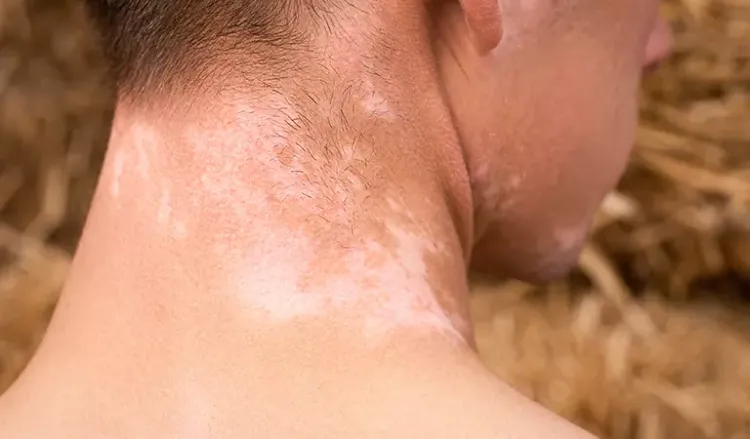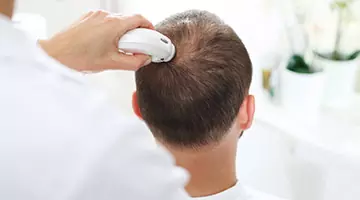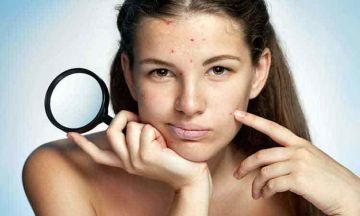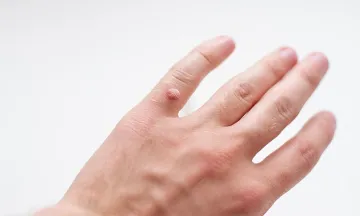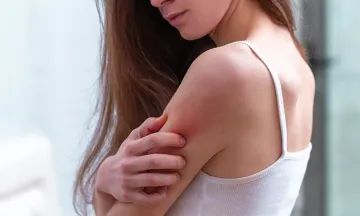5 ways to stop vitiligo from spreading
Vitiligo is an autoimmune condition in which some areas of the skin lose their color. It is also called depigmentation, and it is not contagious. When the skin cells (melanocytes) responsible for producing skin pigment are destroyed by white blood cells, irregular white spots on the skin will appear.&
Vitiligo is a common skin condition disease affecting nearly 70 million people worldwide, roughly 1% of the total population. Common causes of vitiligo disease include autoimmune conditions, environmental factors, genetics, etc. There is no cure for vitiligo, but it is possible to prevent it from spreading. Check out this blog to learn how to stop vitiligo from developing further and available vitiligo treatment options.
How To Prevent Vitiligo From Spreading
There is no permanent cure for vitiligo, and it is impossible to control it. However, there are several ways to prevent vitiligo from spreading further. Here, we have listed the top 8 ways to stop vitiligo from developing further.
1. Stay away from the sun
Sun exposure can trigger vitiligo. Try not to spend too much time outside in direct sunlight for prolonged periods. The depigmented skin is more vulnerable to direct sunlight and may lead to sunburn or worsen your vitiligo symptoms.
-
Look for shade
:
Whenever you are outside in direct sunlight, try to stay under the shade of trees or building shadows. Stay under shade, especially between 11 am to 3 pm when the sunlight is very bright.
-
Wear comfortable clothes
:
Another thing you should do is wear protective clothing during sunny times so that your clothes will block sunlight from reaching exposed areas. Avoid wearing sheer fabrics as they'll only let in sunlight. It is best to avoid skin-tight clothes as they might irritate your skin. Instead, choose comfortable and loose clothing that is gentle on your skin.
-
Use sunscreen
:
Use sunscreen on problem areas before going out into the sun. The small white patches on your skin also need protection from harmful UV rays. If you don't use sunscreen when going out, it may result in excessive pigmentation. Use a sunscreen that has SPF 25 or more. Make sure to reapply the sunscreen every 2 or 3 hours.
2. Avoid cuts and burns
Protect your skin from sunburns, wounds, or cuts, as these will worsen your symptoms. Avoid skin care products that irritate your skin and cause damage. Also, do not expose your wounded skin to chemicals directly, as these will increase the spread of vitiligo.
3. Risks of getting a tattoo
When you get a tattoo, it will develop a minor wound on your skin and cause skin damage. This increases the risk of spreading vitiligo, and more white patches will appear on your skin in less than two weeks. Thus, it is recommended to avoid getting a tattoo if you have vitiligo.
4. Never use a tanning bed or sunlamp
Do not use sun lamps or tanning beds because they can damage the depigmented skin. This will trigger the appearance of more white spots on the skin.
5. Stay away from stress
Stress can aggravate vitiligo, so it's essential to limit your levels of the hormone cortisol to avoid triggering a flare-up of symptoms! Do meditation or yoga for relief. Be sure that you do this at least 30 minutes each day and not too close to bedtime, as these practices will drain you more than usual. You should also try aromatherapy oils such as lavender, which can reduce anxiety.
6. Stay healthy
Vitiligo patients are more likely to experience health problems such as diabetes, high blood pressure, and cardiovascular disease, so you must stay on top of your health. This means eating well, getting enough sleep, and exercising regularly. These three practices can help ward off any additional symptoms or conditions which may arise from vitiligo!
7. Light treatment
Light therapy, or phototherapy, can help restore colour to areas of skin depigmentation. The treatment is typically administered in a doctor's office or clinic and begins with exposing the entire body to ultraviolet B (UVB) light for 15 minutes. After a few days, the treatment is reduced to three times per week for 15 minutes. Light therapy aims to stabilize vitiligo and inhibit progression by triggering the production of melanin.
8. Diet and food habits
Eating rich nutrient foods can enhance your immune system and boost your skin health, which may decrease the risk of spreading vitiligo. Ensure to eat foods containing high amounts of antioxidants, omega-3 fatty acids, beta-carotene, phytochemicals, vitamins, and minerals. Avoid consuming inflammatory-promoting and excessive-fat foods.
|
Foods to eat |
|
|
Foods to avoid |
|
Vitiligo Treatment Options
Vitiligo is not contagious and is not a life-threatening disease, but it affects self-confidence and adds psychological stress. However, there are various treatments for vitiligo disease to control the skin condition, such as medication, surgery, repigmentation, and therapies.&
Topical Medications
Topical medication is one of the most common treatments to repair your skin after regular use for 4 to 6 months. You can use Topical Janus kinase (JAK) inhibitors, Elidel, Protopic, and other Topical calcineurin inhibitors. You need to apply the corticosteroid cream on the white spots on your skin every day.
Oral glucocorticoids like Rayos and immunosuppressants like Sandimmune and Otrexup can be used as a medication for white patches on skin. Before using any topical medication, make sure to consult with your doctor. The healthcare practitioner will prescribe the ideal topical cream based on your skin condition.
Light Therapy
Light therapy (phototherapy) is another treatment in which the white spots on your skin are exposed to light boxes or UVB light through laser treatments. To see results, you need to attend about two or three weekly sessions for a few months.
Depending on your condition, your doctor might also recommend using a topical medication with light therapy. Although your skin condition will improve greatly, the results are likely to fade within a year or two.
Camouflage Therapy
Camouflage therapy is mainly about utilising skin dye, makeup, or tanning products to add pigment to the small white patches on your skin. You can also use long-term or permanent products like skin-staining pens or get medical tattoos.
Repigmentation
Repigmentation or depigmentation therapy is a less common treatment for white spots on the skin. Depigmentation creams are applied to the skin to reverse skin colour loss. This therapy removes the natural pigment from the skin so that the skin colour looks uniform.
About 50% of patients can see results in about 4 to 6 months. This is a permanent treatment, and you need to apply the cream once or twice daily. However, the common side effects of this therapy are a burning feeling sensation, itching, damaged skin, and being extremely vulnerable to sunlight.
Surgery
If your skin condition does not improve with the above treatments, surgery is recommended. There are three different types of surgeries used to treat vitiligo: skin grafting, cellular suspension transplant, and blister grafting.
Skin grafting
Skin grafting is a surgical procedure in which the doctor cuts tiny sections of healthy skin from your body and grafts them onto the white patches. Some of the side effects of this surgery are scars, spotty colour, graft failure, and skin infections.
Blister Grafting
In blister grafting, the doctor creates blisters on your skin to cover the white spots. The tops of the blisters are removed and transplanted on the pigmented skin. Some of the common side effects are scars, damage to the skin, and pigmentation failure.
Cellular suspension transplant
This surgery involves removing tiny skin sections from the donor and then extracting the cells. The doctor will place the cell suspension on the white spots. This surgery could be the best treatment option if you have huge white patches on your skin.
5 Reasons Why You Need to Choose Homeopathy?
There are many natural ways to help with vitiligo. One of the most popular treatment options is Homeopathy. It contains natural ingredients, is side-effect-free, and provides long-lasting results. The benefits of homeopathic remedy for vitiligo are:
- Relief from emotional distress and stress-related symptoms such as anxiety, insomnia, and depression caused due to vitiligo
- Reduction in the appearance of skin lesions associated with vitiligo
- Reduction in the cognitive and physical symptoms associated with vitiligo
- Improvement in the overall quality of life
- Stimulates repigmentation in the existing white patches on the skin by building immunity
Ways to Stop Vitiligo From Getting Worse
Are you wondering if there are any self-care tips to prevent vitiligo from getting worse? Consuming anti-inflammatory foods along with vitamin and mineral supplements is a useful way. Let's learn more about them below.
Eating anti-inflammatory foods
Following a nutrient-rich diet and eating anti-inflammatory foods is best to minimise vitiligo symptoms.
- Eat foods that are rich in antioxidants, such as leafy greens, berries, nuts, dark chocolate, vitamin C, and Vitamin E.
- Incorporate foods that contain sufficient omega-3 fatty acids, such as fish, seeds, soybeans, and nuts.
- Phytochemicals are useful chemical compounds generated by plants, so consume broccoli, carrots, tomatoes, and leafy green vegetables.
- Adding more vitamin D to your daily diet can relieve the symptoms. You can get more Vitamin D by eating eggs, cheese, fatty fish, yogurt, etc.
Taking vitamins and mineral supplements
Taking vitamin and mineral supplements is also a great way to stop your skin condition from worsening. It might not be possible to meet the daily vitamin and mineral intake through foods, which is why it is beneficial to use supplements.
Make sure to consume the following vitamins regularly:&
- Vitamin B12
- Vitamin C
- Vitamin D
- Vitamin E
- Amino acids
- Beta carotene
- Enzymes
- Ginkgo biloba
To prevent the white patches on your skin from developing further, you can take these mineral supplements regularly:
- Zinc
- Copper
- Iron
Who is most vulnerable?
1% of the total population suffers from vitiligo, of which 20 to 35% of patients are children. There is no exact cause of vitiligo, but genetics, environmental factors, autoimmune diseases, and demographic factors can trigger it.
Demographic factors
Anyone is at risk of suffering from vitiligo because it is the most common skin disease globally, affecting nearly 1% of the total population. Regardless of your race and ethnicity, vitiligo affects both men and women. However, about 70 to 80% of the patients diagnosed with vitiligo are under 30 years old.
Environmental factors
Some environmental factors can also put you at higher risk of developing vitiligo, which includes:
- Skin wounds, injuries, and cuts
- Constant sunburns
- Direct exposure of skin to harmful chemicals
- Extreme stress
Autoimmune conditions
If you are suffering from specific autoimmune diseases, you are at high risk of developing vitiligo. Such diseases are:
- Thyroid
- Addison’s disease
- Rheumatoid arthritis
- Psoriasis
- Lupus
- Type 1 diabetes
- Anemia
Genetics
Genetics or family history is another major risk factor for vitiligo. However, if your parents or grandparents have vitiligo, it does not necessarily mean that you will also get vitiligo. Genetics combined with other factors like autoimmune diseases and environmental factors are likely to trigger vitiligo.
Conclusion
Vitiligo is a common skin condition that affects anyone and causes small white patches on your skin as melanocytes are destroyed. You need to keep in mind that vitiligo is not completely curable. However, there are plenty of ways to control the spread of vitiligo, such as medication, therapies, surgeries, diet, healthy lifestyle, etc. You can also take vitiligo test online to know whether you are suffering from vitiligo. It is recommended to talk to your doctor, who will examine your skin condition and suggest the best treatment options.
FAQs
Can we stop it from spreading?
Yes. It is possible to stop vitiligo from spreading using various treatment options, including:
- Topical medication
- Surgery
- Repigmentation or depigmentation therapy
- Light treatment
- Camouflage therapy
- Self-care (following a balanced diet, staying away from the sun, being stress-free, etc)
What decreases vitiligo?
You can minimise vitiligo by eating nutrient-rich foods, taking vitamin and nutrient supplements, decreasing stress, reducing exposure to the sun, staying healthy, applying topical medication, and going to therapies.
How can I recover from vitiligo fast?
No specific method can be used to recover from vitiligo fast because the results will vary from person to person depending on their skin condition. However, you can use topical creams and light therapy to see results in just a few months.
Is it hereditary?
Because genetics is also a major vulnerable factor of vitiligo, it can sometimes be considered hereditary. Even if vitiligo runs in your family, no specific research states that you will inherit the disease. This is because there are many complex cause factors of vitiligo.
How does it start?
Even doctors and scientists do not know the exact cause behind vitiligo. White patches will appear on your skin when white blood cells destroy or damage melanocytes. Melanocytes are the cells that produce skin pigment, and when these skin cells are destroyed, the pigment on your skin will be lost.
Can vitiligo be caused by stress?
Stress is not the sole cause of vitiligo. However, it can worsen your skin condition by developing more white patches on your skin. That is why staying away from stress and getting enough rest to prevent vitiligo from spreading further is important.
What are the symptoms of vitiligo?
The main vitiligo symptoms include:
- White patches or loss of skin colour that initially starts on your face, hands, genitals, and body openings
- Grey or white hair (including eyelashes, beard, eyebrows)
- Loss of tissue colour inside your nose or mouth lining
Is vitiligo painful?
No. Vitiligo is not at all painful. However, direct exposure to sun on the white spots for a prolonged period may cause sunburn, which can cause discomfort. Also, the side effects of vitiligo disease treatment, like scars, itching, and burning sensation, can be painful.
Can vitiligo cause skin cancer?
No. Vitiligo does not cause skin cancer. But, if you are under the sun for a long time, the discoloured skin might be vulnerable to sunburns and skin damage. That is why applying sunscreen is important.
How can I reduce vitiligo at home?
Here are some of the best tips you can follow to reduce vitiligo at home:
- When going out, wear sunscreen SPF 25 or more, wear comfortable clothes, and stay under the shade.
- Exercise regularly
- Sleep well and get enough rest.
- Do yoga or medication to reduce stress.
- Eat nutrient-rich and anti-inflammatory foods daily.
- Take vitamin and mineral supplements regularly.
- Avoid eating high-fat, sugary, processed, gluten, and inflammatory foods as much as possible.
- Do not drink alcohol.
- Use topical medication daily as prescribed by the doctor.
